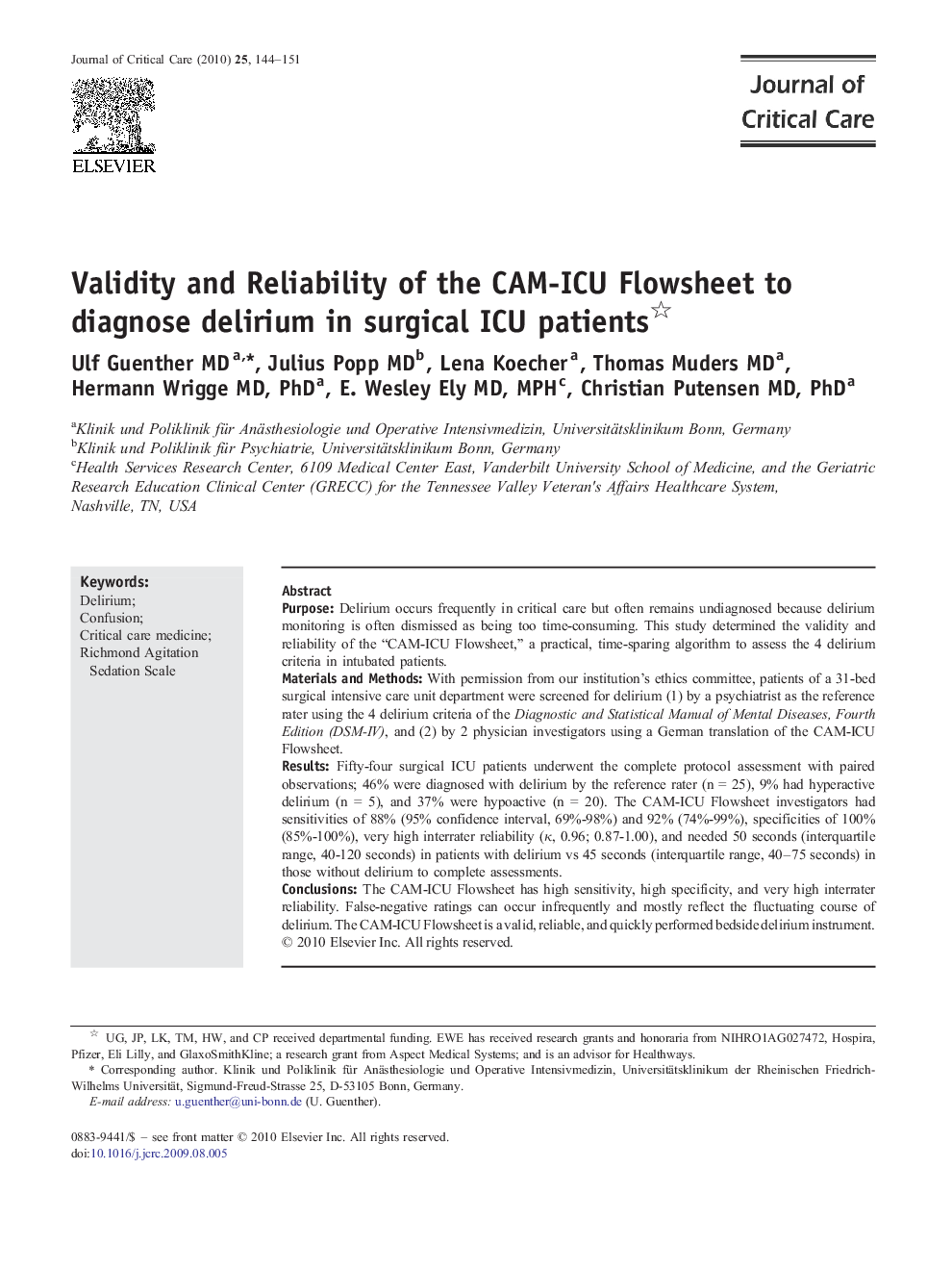| Article ID | Journal | Published Year | Pages | File Type |
|---|---|---|---|---|
| 2765579 | Journal of Critical Care | 2010 | 8 Pages |
PurposeDelirium occurs frequently in critical care but often remains undiagnosed because delirium monitoring is often dismissed as being too time-consuming. This study determined the validity and reliability of the “CAM-ICU Flowsheet,” a practical, time-sparing algorithm to assess the 4 delirium criteria in intubated patients.Materials and MethodsWith permission from our institution's ethics committee, patients of a 31-bed surgical intensive care unit department were screened for delirium (1) by a psychiatrist as the reference rater using the 4 delirium criteria of the Diagnostic and Statistical Manual of Mental Diseases, Fourth Edition (DSM-IV), and (2) by 2 physician investigators using a German translation of the CAM-ICU Flowsheet.ResultsFifty-four surgical ICU patients underwent the complete protocol assessment with paired observations; 46% were diagnosed with delirium by the reference rater (n = 25), 9% had hyperactive delirium (n = 5), and 37% were hypoactive (n = 20). The CAM-ICU Flowsheet investigators had sensitivities of 88% (95% confidence interval, 69%-98%) and 92% (74%-99%), specificities of 100% (85%-100%), very high interrater reliability (κ, 0.96; 0.87-1.00), and needed 50 seconds (interquartile range, 40-120 seconds) in patients with delirium vs 45 seconds (interquartile range, 40–75 seconds) in those without delirium to complete assessments.ConclusionsThe CAM-ICU Flowsheet has high sensitivity, high specificity, and very high interrater reliability. False-negative ratings can occur infrequently and mostly reflect the fluctuating course of delirium. The CAM-ICU Flowsheet is a valid, reliable, and quickly performed bedside delirium instrument.
